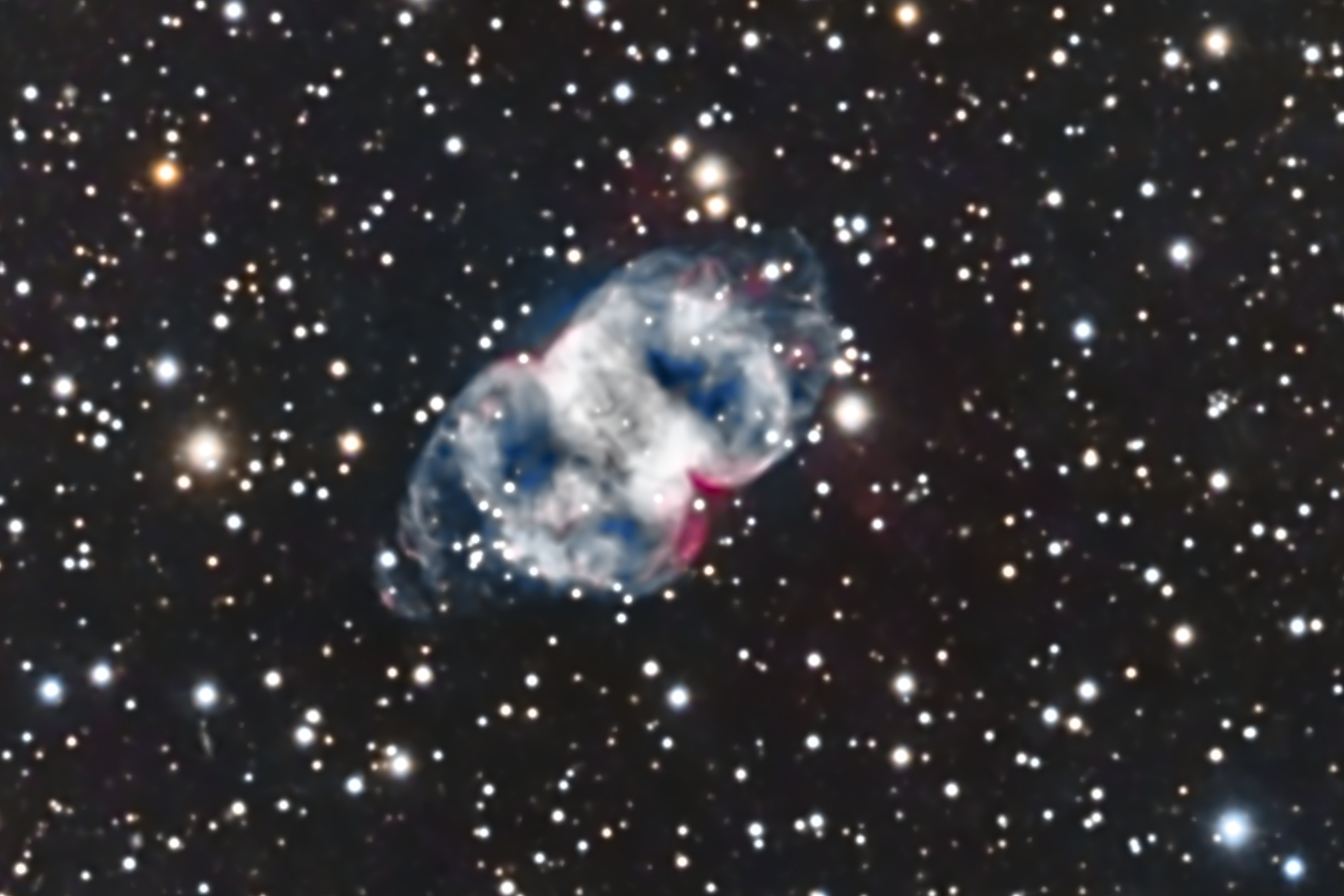
Click image to see full size
| Common Name |
Little Dumbbell Nebula |
| Formal Name |
M 76 / NGC 650 |
| Date |
11/5/2016 |
| Constellation |
Perseus |
| Location |
BrewSky Observatory, Casa Grande, AZ |
| Equipment |
Celestron Edge 11 on Paramount MX, SBig STF8300M Camera/Filter Wheel/STi guider |
| Temperature |
-10°C |
| Exposures |
| # |
Exp (sec) |
Filter |
Bin |
Net Time (hr) |
| 27 |
900 |
Red |
1x1 |
6.75 |
| 21 |
900 |
Green |
1x1 |
5.25 |
| 20 |
600 |
Blue |
1x1 |
5 |
|
|
|
|
|
|
|
|
|
|
|
|
|
|
|
|
|
|
|
|
|
|
Total |
|
17 hrs |
|
| Processing |
Calibrated in Maxim
Aligned/Stacked/Processed in PixInsight. |
| Notes |
- Distance 2500 lyr
- Radius 1.23 lyr
- Has the designations NGC 650 and NGC 651 in the New General Catalogue as it was once believed to consist of two separate emission nebulae.
- Sometimes also called the Cork Nebula or the Barbell Nebula.
- Messier 76 is classified as a bipolar planetary nebula (BPNe). The central star, HD 10346, has a visual magnitude of 15.9 and a temperature of about 60,000 K. In fact, M76 is known to have two stars, not one, at the center. The nebula itself has a surface temperature of about 88,400 K and is moving toward us at 19.1 km/s. Its clouds are expanding at a rate of 42 km/s.
- Discovered by the French astronomer Pierre Méchain on September 5, 1780. Méchain reported the discovery to his friend and colleague Charles Messier, who subsequently included the nebula in his catalogue of deep sky objects.
- American astronomer Heber Doust Curtis was the first to recognise M76 as a planetary nebula in 1918, even though Welsh amateur astronomer and astrophotographer Isaac Roberts suggested in 1891 that the object may be similar to the Ring Nebula (M57), only seen edge-on. Roberts also discovered that M76 was a single nebula and not a double one.
www.messier-objects.com
|

